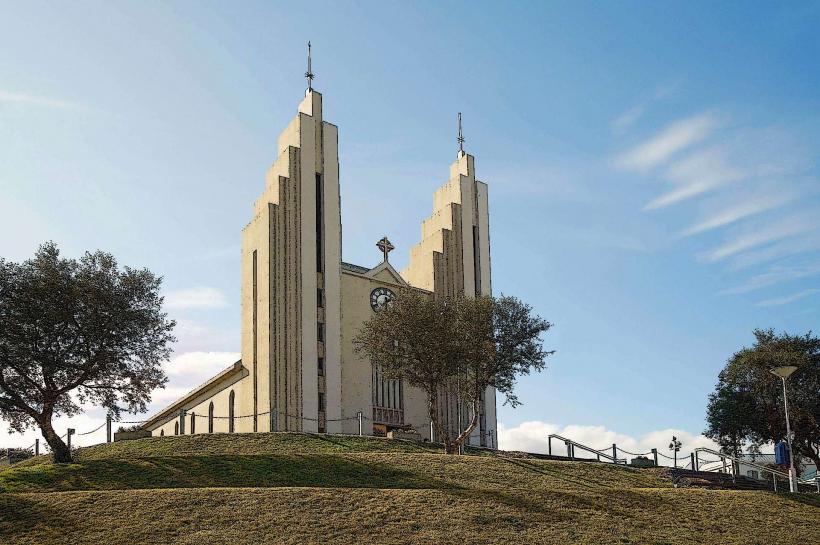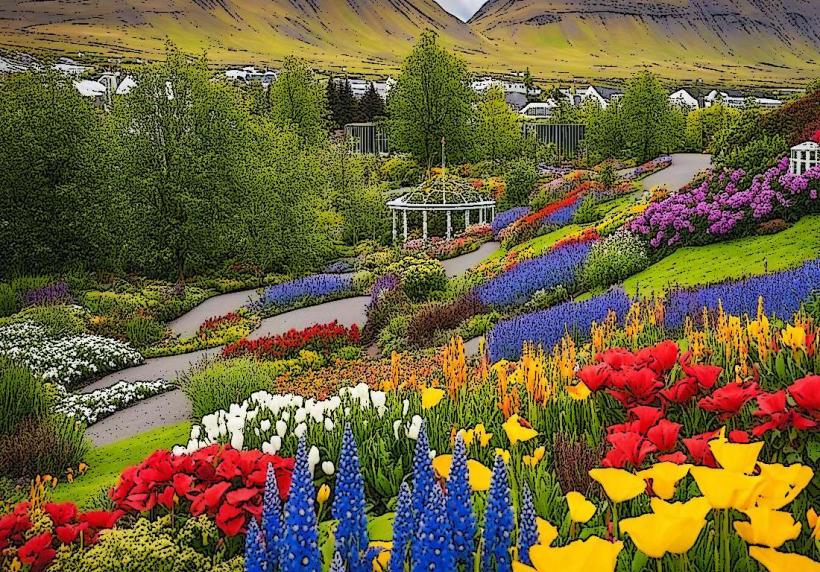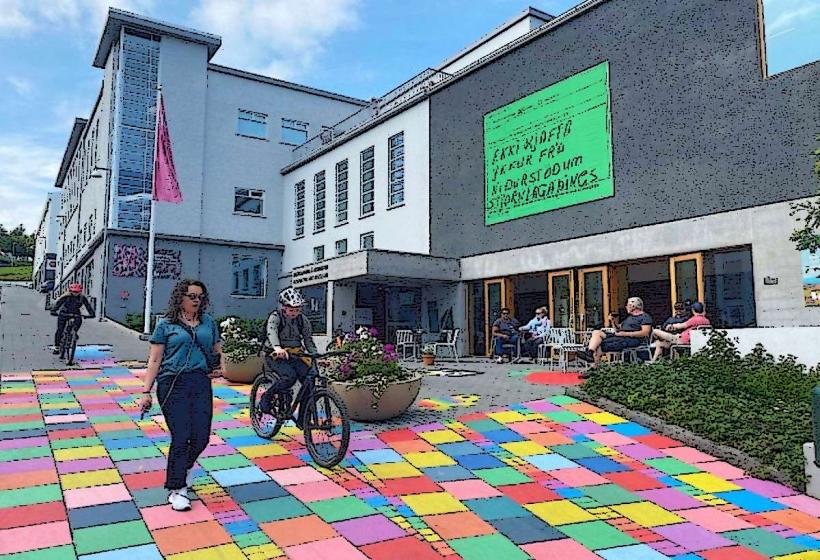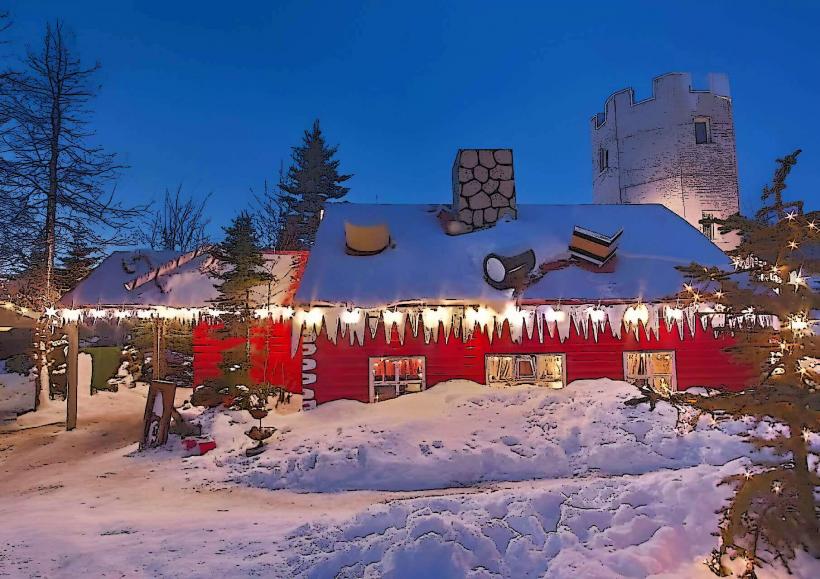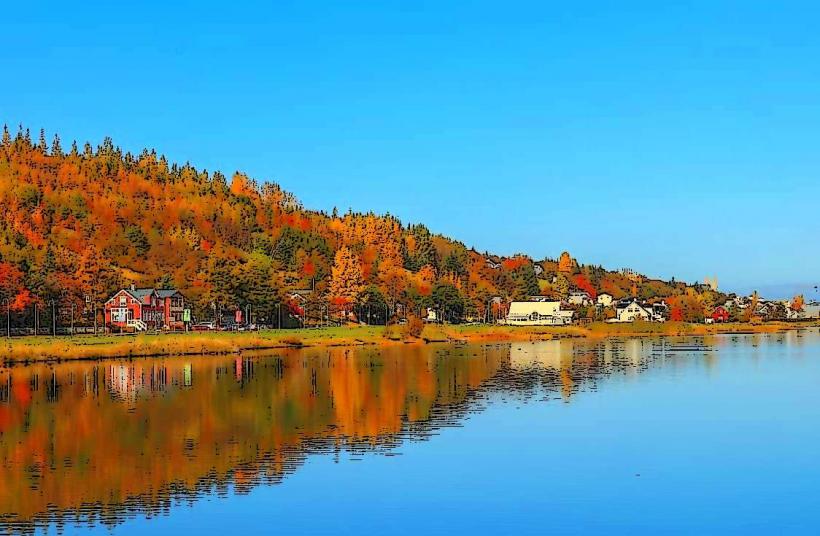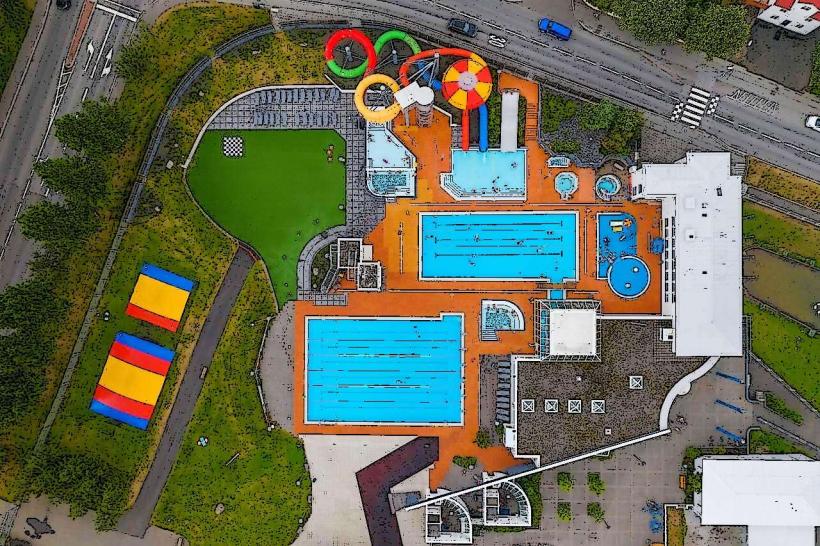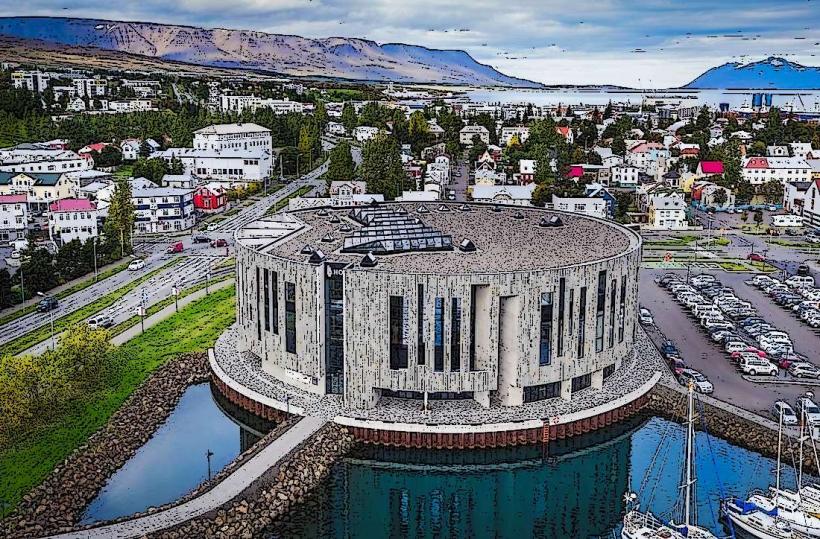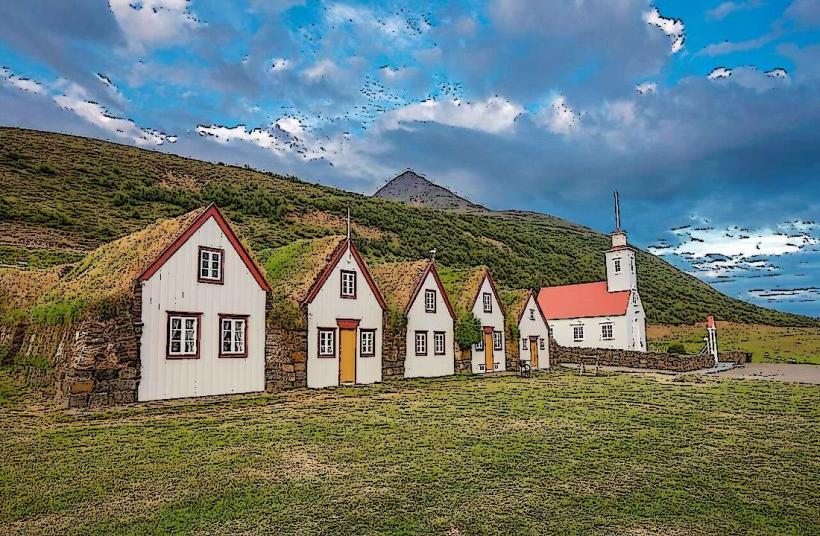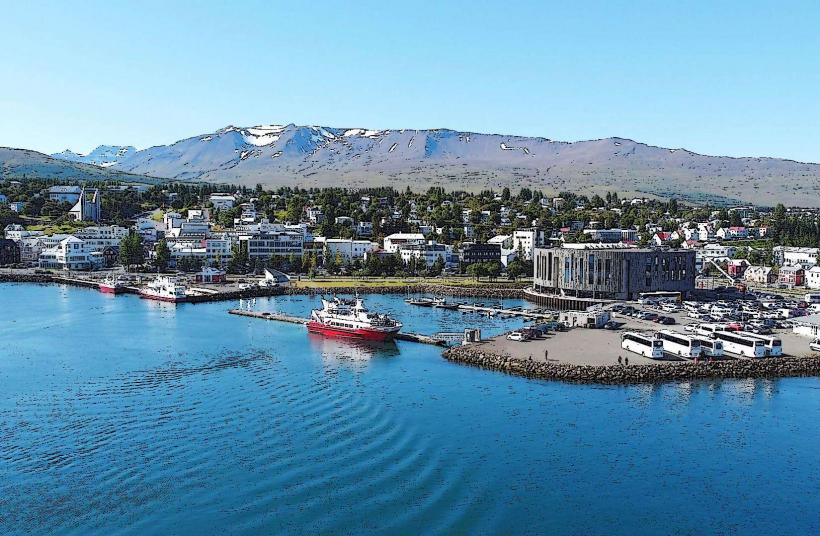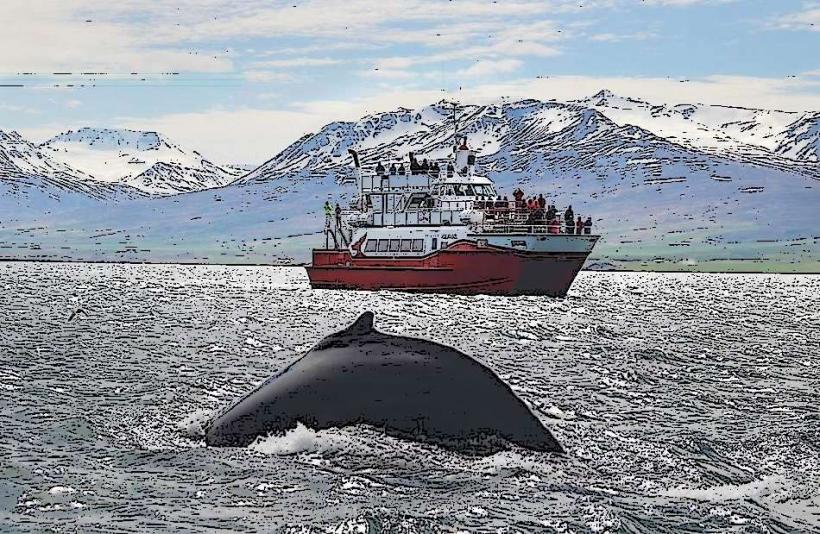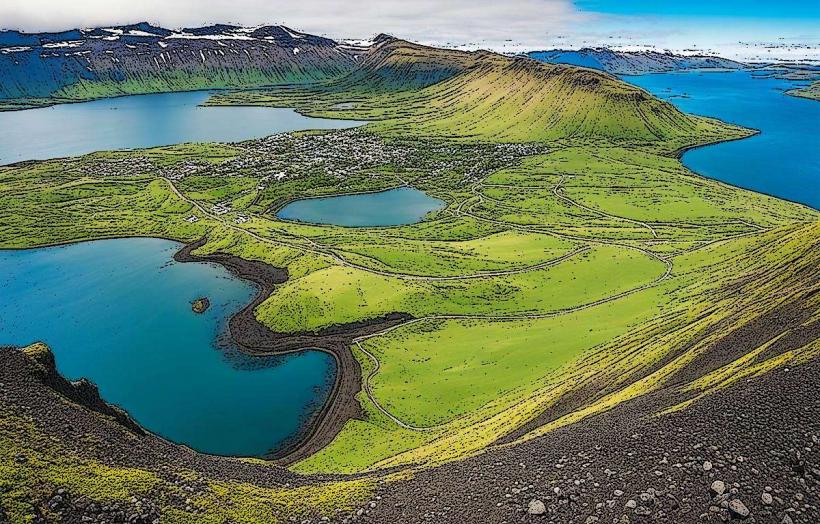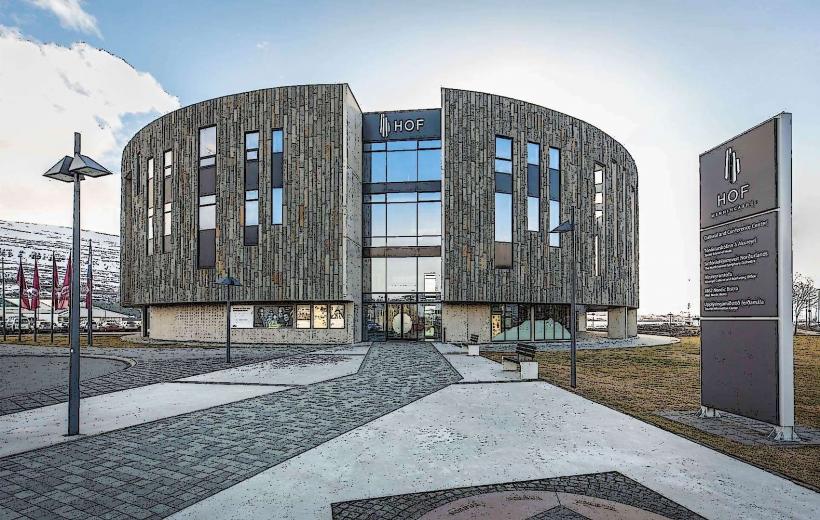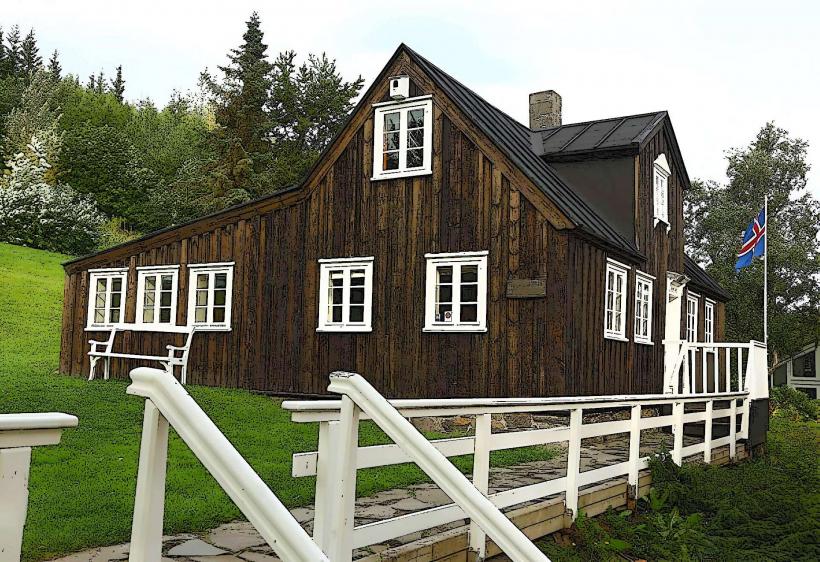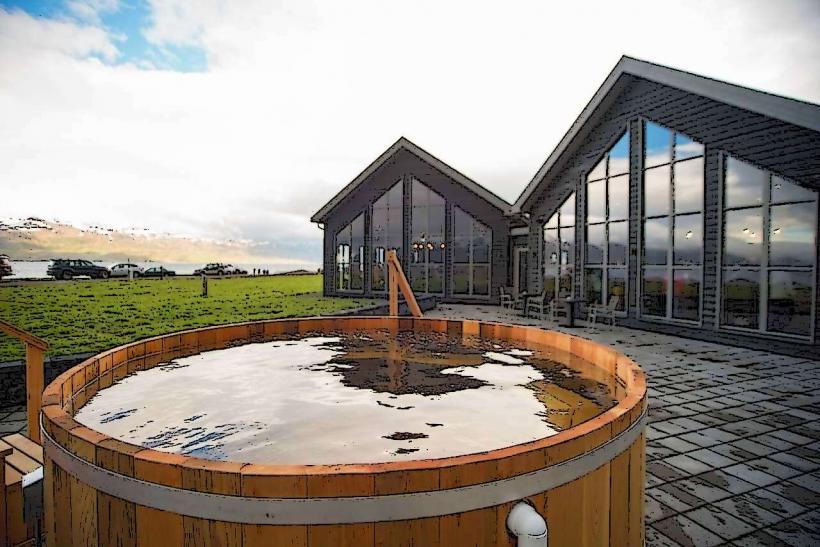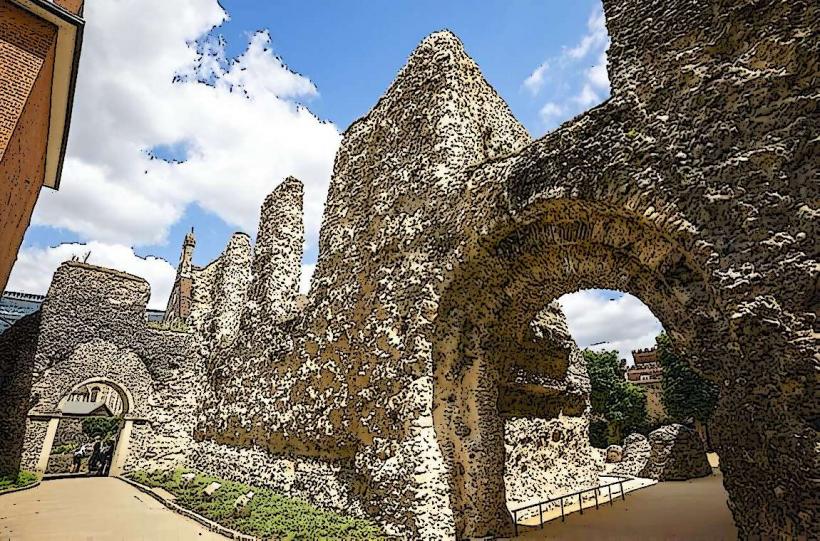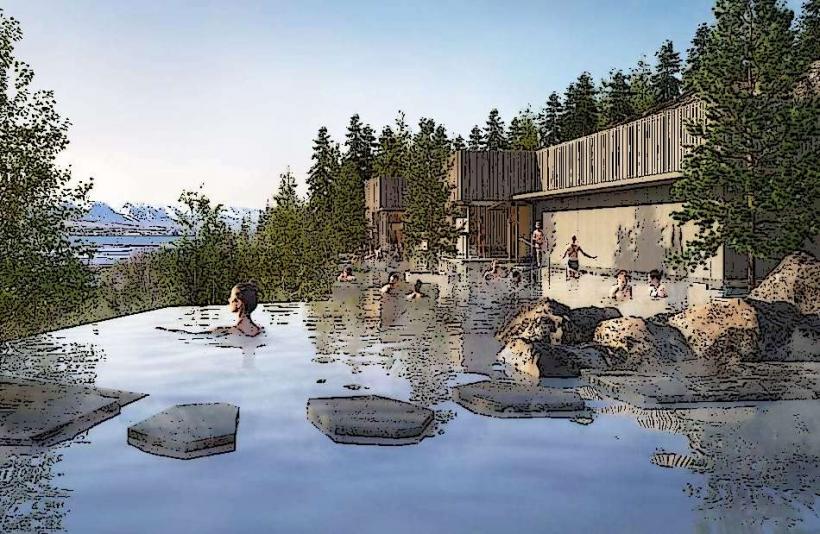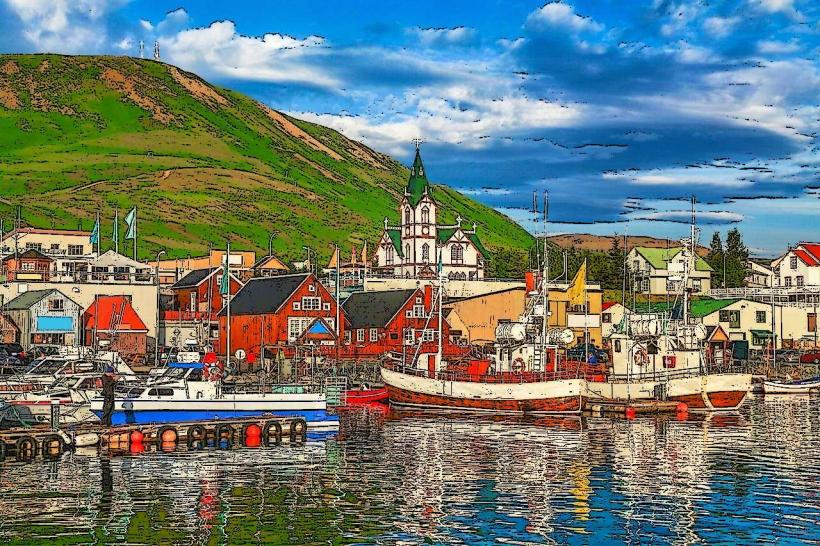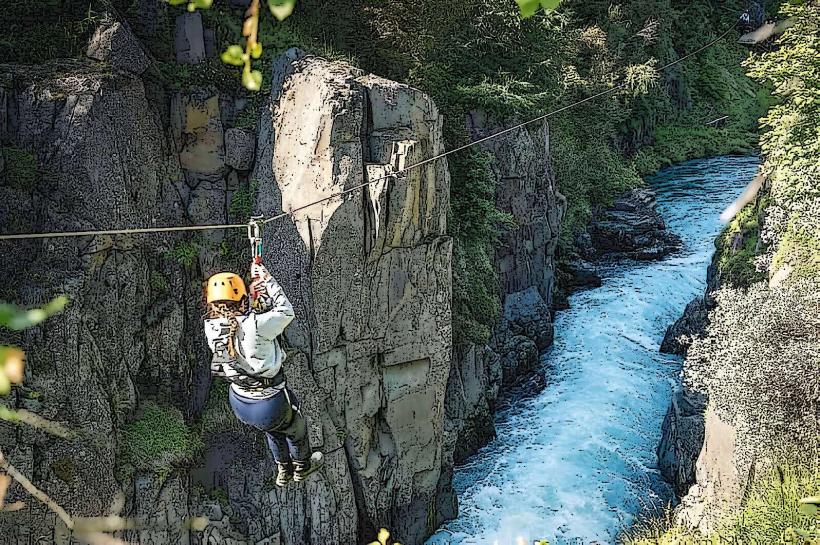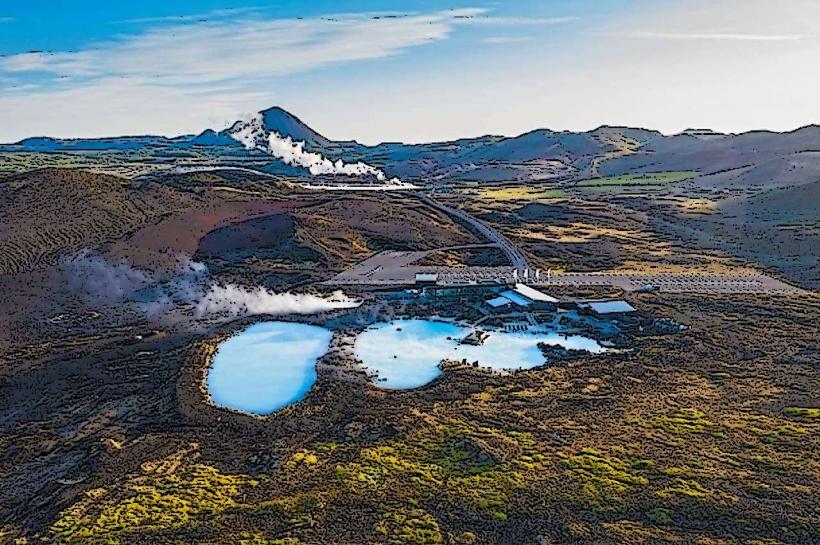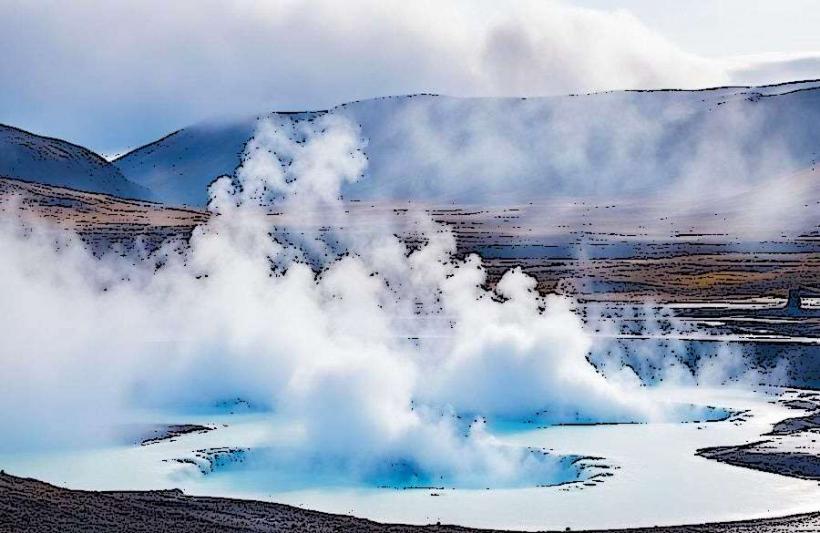Information
Landmark: Námaskarð Geothermal AreaCity: Akureyri
Country: Iceland
Continent: Europe
The Námaskarð Geothermal Area (often referred to as Námaskarð Hot Springs) is one of Iceland’s most striking geothermal fields, located just south of Lake Mývatn in North Iceland. This area is renowned for its boiling mud pots, fumaroles, sulfur springs, and unique volcanic landscape, offering a fascinating glimpse into the Earth's geothermal activity. The site is a part of the larger Krafla volcanic system, which contributes to its intense geothermal features.
Key Features of Námaskarð Geothermal Area
1. Geothermal Activity
- Námaskarð is a highly active geothermal area, characterized by intense volcanic and geothermal processes beneath the surface. It is part of the Krafla volcanic system, which has been active for thousands of years. The heat from underground magma heats water, causing it to rise to the surface and create the hot springs, mud pools, and fumaroles seen today.
- The geothermal features include sulfuric hot springs, steam vents, and boiling mud pots. The ground is heated by magma and hot gases, creating one of the most dynamic geothermal regions in Iceland.
2. Boiling Mud Pots
- One of the most famous features of the Námaskarð Geothermal Area is its boiling mud pots, which bubble and gurgle as they heat up. These mud pots are created when geothermal water mixes with volcanic ash and minerals, forming thick, sticky mud that boils as it reaches the surface.
- The mud pots vary in size and intensity, some bubbling violently while others have a more subdued and rhythmic motion. Their grayish color and thick consistency contrast with the vibrant sulfur deposits and the surrounding landscape.
3. Fumaroles and Steam Vents
- Fumaroles (steam vents) are another prominent feature of the area. These vents release steam and gases from beneath the Earth’s crust, creating clouds of vapor that rise dramatically into the air. The smell of sulfur is strong in many parts of the geothermal field due to the release of sulfur gases.
- The steam from the fumaroles creates an ethereal and often misty atmosphere, which adds to the area's mystical and otherworldly ambiance. Visitors can often see clouds of steam rising from cracks in the earth, creating a unique and fascinating environment.
4. Sulfur Deposits and Colorful Landscape
- Sulfur deposits are another distinctive characteristic of Námaskarð. These deposits are formed when sulfur gases cool and solidify on the surface, leaving behind vibrant yellow, orange, and red patches of mineral-rich terrain. The vivid colors of the sulfur deposits provide a stark contrast against the dark volcanic rocks and gray mud pots, creating a stunning, almost surreal landscape.
- The colorful landscape is one of the most photogenic aspects of Námaskarð, with the bright yellows and reds of the sulfur contrasting with the earthy browns and grays of the volcanic rocks.
5. Walking Trails
- The Námaskarð Geothermal Area is equipped with well-maintained walking paths that allow visitors to explore the geothermal field safely. These paths wind around the mud pots, fumaroles, and sulfur springs, offering excellent views of the geothermal activity and the surrounding area.
- Visitors should stay on the paths to avoid hot spots, as the ground can be extremely hot near the fumaroles and boiling mud pools. The area is a popular destination for those interested in geology and volcanism, as it offers a rare opportunity to witness geothermal processes in action.
6. Vivid Colors and Otherworldly Scenery
- The combination of bubbling mud pots, colorful sulfur deposits, and steam vents makes Námaskarð one of the most visually stunning geothermal areas in Iceland. The mix of colors and textures—yellow, orange, gray, and black—creates an almost alien-like landscape, which is both dramatic and beautiful.
- The contrasting colors of the landscape, combined with the constant movement of the boiling mud and the steam rising from the fumaroles, make this a dynamic and ever-changing environment.
7. Safety and Precautions
- Due to the geothermal nature of the area, visitors must exercise caution while exploring Námaskarð. The ground is hot and can be dangerous, especially near the fumaroles and boiling mud pots. Visitors should always stay on the designated walking paths and avoid touching the hot surfaces or venting steam.
- The strong sulfur smell can be overwhelming in some areas, so it is advisable to wear a mask or limit exposure if you are sensitive to the odor, particularly for those with respiratory conditions.
8. Nearby Attractions
- Námaskarð is located near Lake Mývatn, a region known for its unique natural beauty and abundant wildlife. The lake itself is a popular spot for birdwatching, particularly during the summer months, when migratory birds such as ducks and swans are abundant.
- Other nearby attractions include:
- Krafla Volcano: A highly active volcano system that has erupted multiple times in the last century. The volcanic area around Krafla offers various hiking trails, including the hike to the Viti Crater, a volcanic crater filled with a small lake.
- Hverir Hot Springs: Another geothermal area near Námaskarð, featuring bubbling mud pools and fumaroles. It is often visited alongside Námaskarð for a full geothermal experience.
- Dimmuborgir Lava Fields: A surreal landscape of lava formations, known for its otherworldly shapes and steep cliffs. The area is famous in Icelandic folklore and is believed to be inhabited by elves and trolls.
- Mývatn Nature Baths: A geothermal spa similar to the famous Blue Lagoon, where visitors can relax in hot mineral-rich waters while enjoying scenic views of the surrounding volcanic landscape.
9. Best Time to Visit
- Námaskarð Geothermal Area can be visited year-round. The summer months provide clear trails and warmer temperatures, making it easier to explore the area. The long daylight hours also allow visitors to experience the geothermal features in the best lighting for photography.
- In winter, the landscape takes on a more dramatic and serene quality, with snow and ice contrasting with the geothermal activity. Some paths may be slippery, but the cold weather adds a unique beauty to the region.
Conclusion
The Námaskarð Geothermal Area is a must-visit destination for those exploring North Iceland. The bubbling mud pots, colorful sulfur deposits, and dramatic fumaroles create a fascinating and surreal landscape. Its unique geothermal activity, combined with the surrounding volcanic terrain, makes Námaskarð an unforgettable experience for visitors interested in geology, nature, and Iceland's natural wonders.

